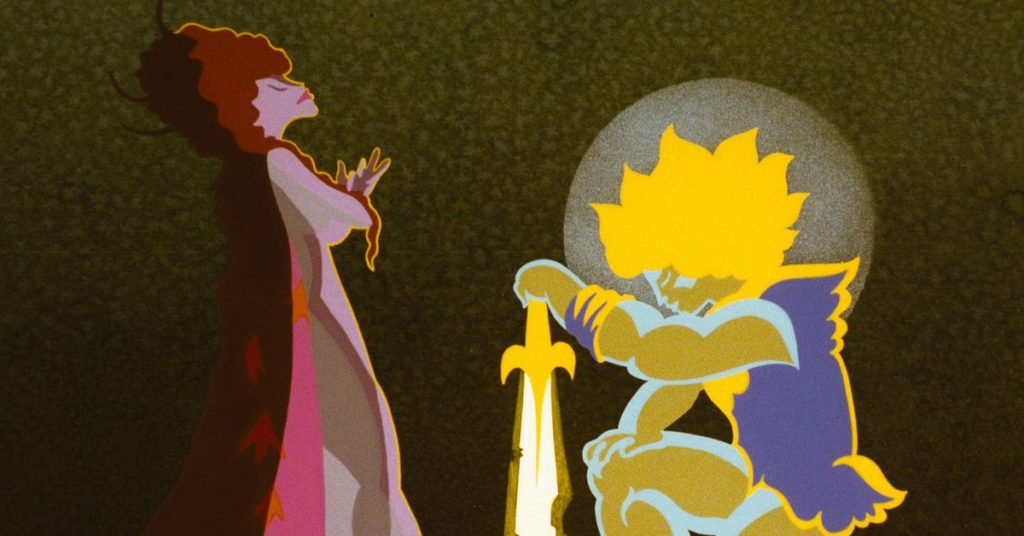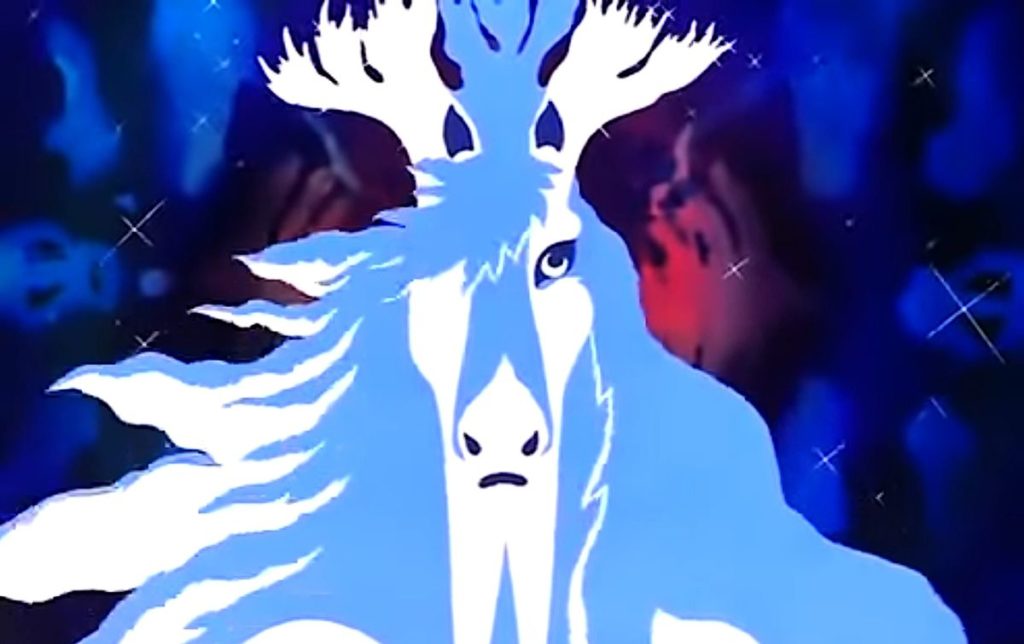Son of the White Mare
April 5, 2023 · 0 comments
by Jeremy Clarke.

Three impatient brothers demand their inheritance from their father the king, who gives it to them on condition that they must not open the locked doors in any of the castles he gives them. Their three wives ignore the prohibition, open the doors and release three dragons. A white mare births a foal which turns into a human, who grows to become Treeshaker who, after two periods of drinking his mother’s milk for seven years, is strong enough to shake the gigantic tree under which she gave birth.
The mare reveals that she previously birthed his two brothers Stonecrumbler and Irontemperer who Treeshaker sets out to find. He turns out to be the strongest of the three and they agree to rescue the princesses, now taken as wives by three dragons and living in three rotating castles, each seemingly more impregnable and each dragon seemingly more powerful than the one before it.

Son of the White Mare owes much to one of the great storytelling devices, parents dividing up their inheritance among their offspring. Shakespeare used this as the basis for King Lear and a few years after Jancovics, Kurosawa used it as the basis of Ran (1985) where he cleverly colour-coded three brothers (and their armies). Here, director Marcell Jancovics (1941-2021) does something similar: Son’s three princes and their wives are initially coded as blue/green, yellow and red/orange, although the colour scheme doesn’t remain constant and when we later catch up with the princesses, they are coloured purple, green and blue.
When the three dragons put in an appearance later on, they look nothing like any dragons you’ve seen anywhere else before or since. The three-headed dragon has its three heads constantly arranged in different ways, on occasion stacked one above the other like a totem pole. The seven-headed, second dragon looks like a tank with innumerable gun barrels. The 12-headed, third dragon is like a city of tower blocks constantly rising and falling, an extraordinary graphic motif of ever-changing squares and rectangles.

This 1981 Hungarian animated epic is one of the great, largely unknown treasures of animation. Jankovics made a number of shorts and commercials before his two features at the Pannonia Film Studio. Eureka!’s Blu-ray contains both features, as well as some of his most significant shorts. While Son of the White Mare remains his indisputable masterpiece, the other films on the disc go a long way to explaining how he got there.
Created as a commercial for Air India, Dreams on Wings (1968) is an eight-minute short that’s basically an excuse for a series of free-flowing sequential moving images and tableaux relating to passenger air travel, famous world cities and landmarks and Indian culture. A map of the Indian subcontinent morphs into an elephant carrying a passenger in a howdah, the Air India logo, an aircraft flying towards us and finally a map of the globe. Later on, a smiling male airline cabin passenger turns into a safely flying aircraft, while Broadway neon signs give way to the Houses of Parliament, the Eiffel Tower becomes a gendarme directing air traffic, and a camel with a pyramid-shaped hump rises to its feet. The level of visual invention is high throughout and one imagines Air India would have been delighted with the film.

Sisyphus (1974) is a 2½-minute short which puts on the screen the Greek myth in which a man is condemned to spend eternity rolling a boulder up a hill, only for it to roll down when he reaches the top. Jankovics’ version has the man roll a boulder up to the top of a pile of boulders so that each rolling is slightly longer than the last, as we realise in the final shot where the hill is revealed to be the pile of previously rolled boulders. But the rolling is the thing, with the film brilliantly capturing the sheer physical effort, augmented by the man’s breaths and groans on the soundtrack. As he exerts himself, the incredible visuals of black paint on white background shift from the man’s fully detailed musculature to wispy, graphic lines, the extraordinary effect of which is that you really feel his physical exertion as he pushes the boulder with great difficulty in a supreme act of will.
The Struggle/Küzdők (1977) is another 2½-minute short. Here, a nude sculptor resembling Michelangelo’s David works on a life-sized sculptural replica of himself. As he does so, however, and the sculpture begins to take shape, it produces a chisel and starts working on him, changing his features in the process and turning him into a spent, elderly man. The whole is animated as black and white drawings fully rendered with heavy shading, a highly effective style for delivering this simple if profound visual conceit. I was reminded of parts of Czech surrealist Jan Švankmajer’s later stop-frame short Dimensions of Dialogue (1983) where two clay figures pull each other to bits and two clay heads destroy each other in a game of stone, scissors, paper. It also has echoes of Dutch artist M.C. Escher’s 1948 lithograph Drawing Hands, in which two hands hold pencils as they draw one another.
In a Hungarian National Film Archive programme shot in 2020, Jancovics talks about how the Air India film coalesced his personal animation style, which he describes as “metaphor into metamorphosis”. He goes on to talk about the Beatles exploding animation with Yellow Submarine (1968), providing a third model different from the dominant Disney and the more European, New York-based UPA style of the day, and the influence of that film on his first animated feature Johnny Corncob (1973). He also discusses the “transitional characters” of Son of the White Mare – a deer who becomes a mare, a foal who becomes a human child.

A three-minute, 1973, black and white TV promo for his debut feature Johnny Corncob provides tantalising glimpses of Jancovics’ designs for the film, which also appears in full on Eureka!’s disc. Watching it, the debt to Heinz Edelmann’s designs for Yellow Submarine is apparent: Johnny the hero looks and moves a lot like Pepperland’s beleaguered Old Fred without the beard; fighting Turks look a lot like the ones in Yellow Submarine minus the distinctive, surreal, biting stomach teeth, and a King of France who, although not a villain, looks suspiciously like a Blue Meanie recast with pink skin. Jancovics’ animation, the way his characters actually move, also has Yellow Submarine written all over it.
Yet there are plenty of original touches about Johnny Corncob too which anticipate Son of of the White Mare, which is not so much derivative of Yellow Submarine as it is similarly inventive. When Johnny and his lady love Iluska embrace, they turn into a striking visual motif of two doves. There are numerous other touches, for instance an army of demons and witches, where the graphic style is like nothing you’ve ever seen in terms of form and colour.
Where Johnny Corncob often looks derivative of Yellow Submarine, every frame of Son of the White Mare boasts startling originality in terms of its imagery and visuals, a veritable feast for the eyes throughout. Yellow Submarine eventually surfaced on home viewing platforms because it had the immense pulling power of the Beatles, but Son of the White Mare’s folktale origins clearly won’t appeal to marketeers or money men in quite the same way. That said, Eureka! Video have picked it up and packed its Blu-ray presentation with the worthwhile extras discussed above and the result is as essential buy from any self-respecting admirer of animation. Or, for that matter, anyone with the slightest interest in cinema. The film may be less familiar than Yellow Submarine, but it turns out to be just as amazing, groundbreaking and significant a piece of work.
Son of the White Mare is released on Eureka! Blu-ray in the UK and Ireland.
Jeremy Clarke’s new website is jeremycprocessing.com
Leave a Reply